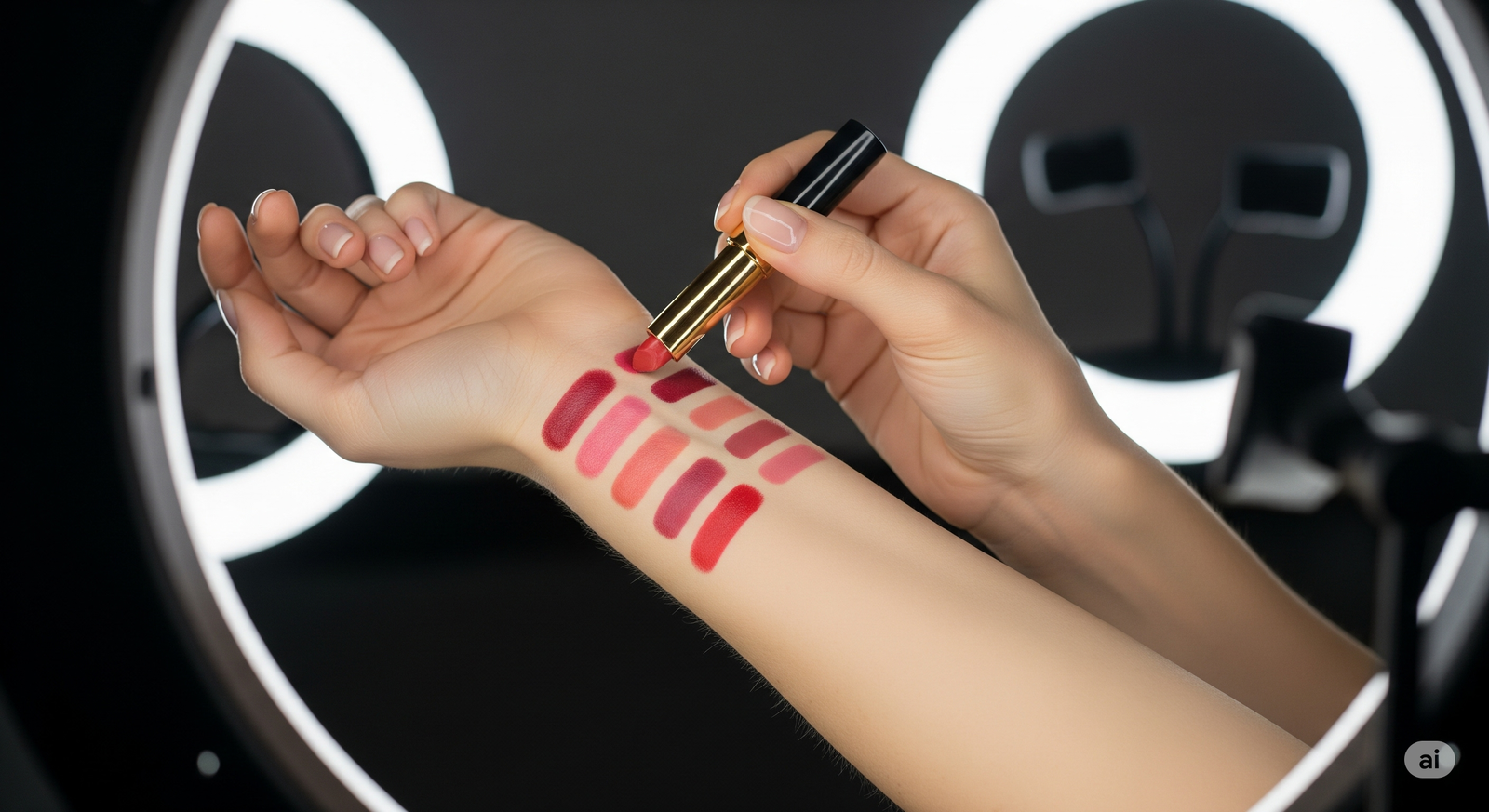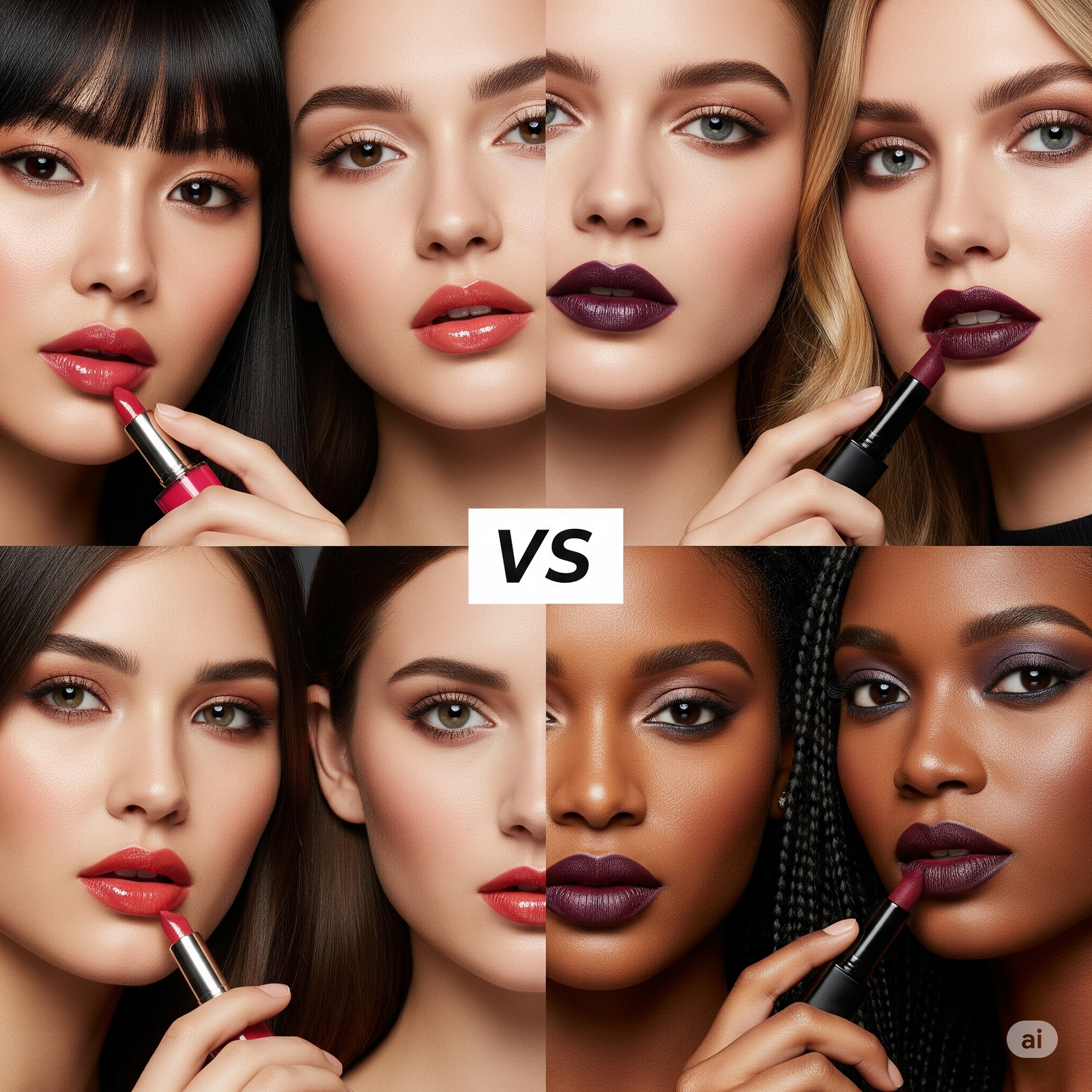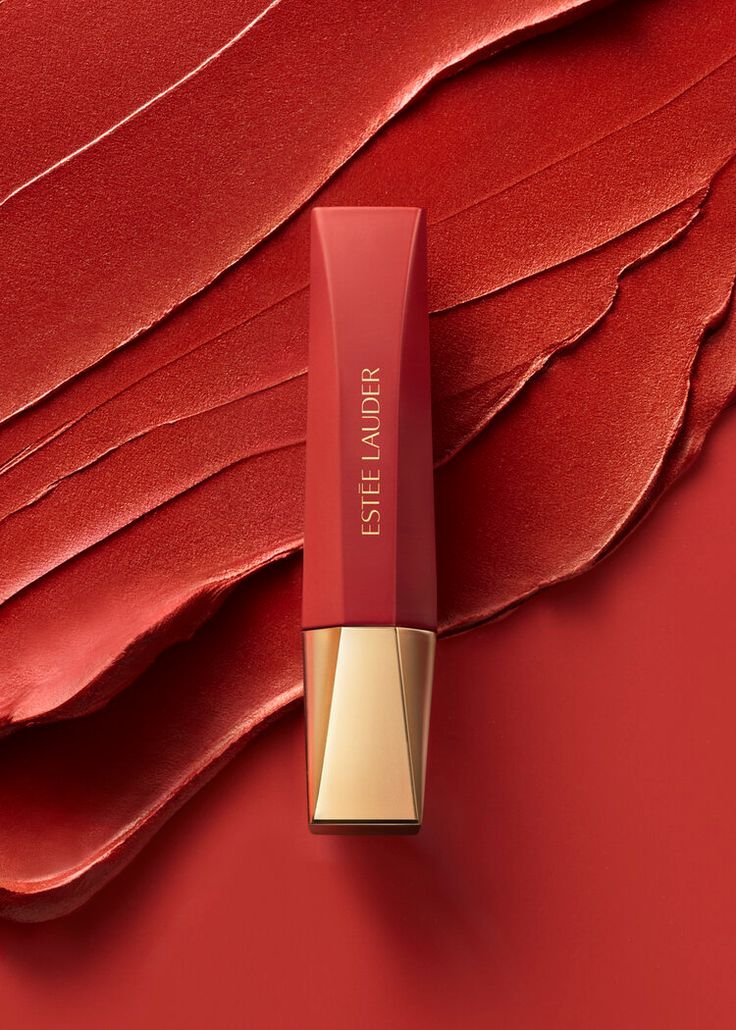Lip Lines and Lighting: Cinematic Tips for Better Swatches
Master lip swatch cinematics with the best lighting for lipstick. Learn how gloss vs matte lighting transforms visuals with lip tone precision and brand impact.
16 Jun'25
By Niharika Paswan


Lip Lines and Lighting: Cinematic Tips for Better Swatches
Lip swatches aren’t just proof of pigment. They’re storytelling devices. For beauty brands, they’re also one of the most critical moments in the content pipeline, whether you’re teasing a launch, testing a texture, or showing payoff in real time. But not all swatches are created equal. Without the right lighting, you lose contrast. Without control over shadows, you miss detail. And if your gloss is flaring or your matte is dull, you’ve lost the emotional punch.
So how do you capture lip swatches that feel as luxurious, tactile, and true-to-tone as the product itself? The answer lives in your lighting setup, and how you work with the unique way gloss and matte formulas reflect, absorb, and shape light.
This is where cinematic thinking comes in. The same principles that guide film lighting can elevate lipstick content into something mood-rich, brand-aligned, and share-worthy.
Understanding the Lip Surface: Why Lighting Needs to Adapt
Your lips aren’t flat. They curve, crease, and catch light in unexpected ways. And every texture, matte, satin, gloss, velvet, interacts with lighting completely differently.
Matte lips absorb light, especially across textured or dry areas. They tend to look smoother and more editorial when lit from the side, letting the natural contours of the lip create dimension without heavy contrast. On camera, they’re tricky, they can look dull or even lifeless if overlit.
Glossy lips, on the other hand, reflect everything. They catch direct light and amplify it. That means they can look juicy and vibrant, but also overly shiny, flared, or distorted if the lighting isn’t controlled.
The takeaway: your lighting setup shouldn’t be one-size-fits-all. It should be tailored to the finish you’re shooting. Matte and gloss require opposite approaches, and understanding that is the foundation of great lip cinematics.
Gloss Flare vs. Matte Absorb: Lighting by Finish

Let’s go deeper into how to light both finishes and how to avoid the most common pitfalls.
Gloss Finish
What it needs: Controlled highlights, directional light, bounce diffusion
Gloss formulas thrive under lighting that mimics natural glow, think golden hour, candlelight, or studio bounce boards. But uncontrolled gloss lighting can result in harsh reflections, flared edges, or distracting glares that flatten the color and obscure detail.
Tips:
- Use a softbox at an angle. This creates a soft highlight along the lip curve without overexposing the product.
- Add a bounce card underneath the chin. This lifts shadows and brings dimension back to the lower lip.
- Avoid on-camera flash or phone LED. These sources create harsh reflections and uneven shine.
- Use continuous lighting if possible. This helps monitor reflection shifts in real time and keeps gloss looking fluid, not spiky.
Gloss lighting is about restraint. You want reflection, not chaos. Shine with shape, not sizzle.
Matte Finish
What it needs: Shadow modeling, even side light, skin-tone warmth
Matte finishes absorb light, so they often appear flat without thoughtful illumination. You’re not just lighting the lipstick, you’re shaping the lip surface to retain depth and richness.
Tips:
- Use side lighting at a 45-degree angle. This enhances the natural lip lines and curves, giving the matte finish definition.
- Warm your light temperature. Matte lips can look pale or chalky under cool light. A 4000 - 4500K light source helps maintain skin tone integrity.
- Keep shadows soft. Avoid hard-edged lighting setups. Use diffusion panels or umbrellas to soften the cast.
- Don’t overexpose. Matte textures lose their charm if they’re too bright. Slight underexposure often makes the texture pop more authentically.
Matte finishes need more atmosphere. Think of matte swatches as close-up portraits—they benefit from painterly shadows and a sense of depth.
Side Lighting vs. Direct Lighting: Choosing Your Mood
Your lighting angle isn’t just about visibility, it defines the mood of your reel or swatch. Here’s how different angles affect lip visuals.
Direct Lighting (Front-Facing)
Pros:
- Good for showcasing clear pigment and uniform texture
- Works well in product explainer videos or tutorial-style content
- Minimizes shadows, which can make application look cleaner
Cons:
- Flattens lip contours
- Can mute the richness of the color
- Makes gloss harder to control
Best used when clarity is more important than emotion, great for comparison reels or educational formats.
Side Lighting
Pros:
- Highlights the lip shape and texture
- Adds cinematic drama and depth
- Ideal for matte finishes and moody visuals
Cons:
- Can hide color accuracy if not balanced
- Shadows need careful control with reflectors or fill light
Perfect for storytelling moments, swatch reveals, or slower cinematic edits.
Top Lighting
- Brings out cupid’s bow and lip curvature
- Can make gloss look extra dimensional
- Risky for matte - it can cast heavy shadows below the lower lip
Back Lighting
- Great for artistic shots or silhouette plays
- Use sparingly - it often doesn’t help in pigment storytelling
Lighting angle is your visual tone of voice. Choose it the way you’d choose a lipstick tone: with intent and awareness.
Color Accuracy: Lighting Temperature Matters
Color temperature changes how lipstick looks on camera. Too cool, and warm reds turn pink. Too warm, and mauves look brown. For true-to-tone lip content:
- Use daylight-balanced lights (around 5000–5500K) for neutral accuracy
- Avoid mixed lighting (sunlight + artificial) unless you're intentionally stylizing
- Test white balance before shooting to avoid hue shifts
- Use neutral backgrounds to avoid color cast bounce (especially with bold shades)
If you're shooting across different days or locations, always log your lighting setup. Consistency is key to keeping shade visuals brand-true.
Animated Swatches: Why Lighting Still Matters in Motion
A lot of brands are embracing animated swatch content, swipes that melt, lip colors that bloom, or lipstick bullets that open themselves. But no matter how stylized the animation, lighting fundamentals still apply.
In animation, light is digitally added but it still follows real-world physics. If a gloss animates with no reflection, it feels fake. If a matte animates with a mirror-like shine, it confuses the viewer.
Even in digital environments, gloss should flare correctly. Matte should absorb. Shadows should follow the natural curve of the lip or the swipe. The goal is not perfection, it’s believability. And that’s what keeps the viewer emotionally connected.
The Admigos Angle: Animating Studio-Quality Swatch Setups
At Admigos, we treat swatch content like cinematography. Every lip, every swipe, every reflection is crafted to feel real, even when it’s animated. Our team builds lighting setups in 3D environments that simulate real studio gear from softboxes and bounce cards to reflectors and gels.
We understand how gloss catches light and how matte wants to stay moody. We animate light movement across lips, not just color. That’s what makes a 2-second swipe reel feel alive. It’s not just about looking polished. It’s about feeling like you’re right there, in the room, watching the color unfold.
Takeaways for Beauty Brands
If your lip swatches aren’t visually landing, it’s likely a lighting issue, not a product one. Whether you're working with a phone camera, DSLR, or full-scale animation team, the principles are the same:
- Match lighting strategy to lipstick finish
- Use angle and diffusion to shape mood and clarity
- Prioritize color accuracy with consistent temperature
- Don’t forget lighting in post-production or animation it's still storytelling
- Let gloss glow and matte whisper, and use lighting to support both
In beauty content, light isn’t just functional, it’s emotional. Get it right, and your lip visuals don’t just look good. They feel good.
Links to be checked
— By Niharika Paswan
From Pout to Purchase: Animating the Buyer Journey
Lipstick marketing strategy meets motion design. Admigos turns scrolls into sales by animating the cosmetic buyer journey—one swipe, smudge, and CTA at a time.
.png)
How Lipstick Becomes a Brand’s Signature Symbol
Signature lipstick branding defines a product’s legacy. Admigos shapes lipstick visual identity through motion, packaging, and emotion-driven design.
